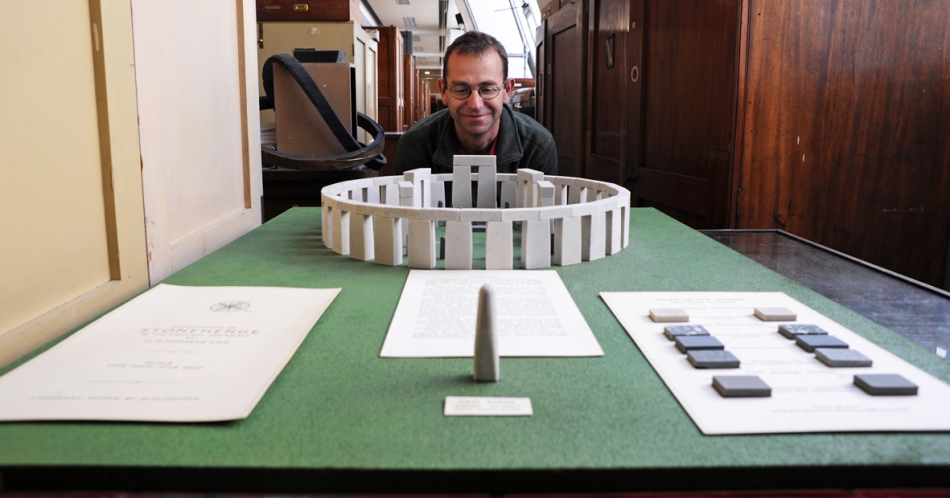From the July-August 2014 edition of "British Archaeology"
Historic Stonehenge model found
A precise model of Stonehenge, made from stone taken from the supposed sources in Wales and Wiltshire which supplied the real monument, has been found in a store at the Natural History Museum, London. It appears to have been created between 1924 and 1935 by Herbert Thomas, the geologist who first identified the Preseli hills in Pembrokeshire as the origin of most of Stonehenge’s “foreign” stones.
With acknowledgement to Mike Pitts's blog:
https://mikepitts.wordpress.com/tag/natural-history-museum/
When I was a student in London, learning some basic geology for my
archaeology degree, we talked about Stonehenge. A geologist had just
proposed that the bluestones, the small stones from Wales, had not been
carried there by people, but by glaciers. It was an old idea, and one
that still stirs a little fringe debate, but unusually this time the
case was presented in the pages of Nature (“Glaciation and the stones of
Stonehenge”, by GA Kellaway, Nature 233, 30-35, 3 September 1971)
I went to the Geological Museum (as it then was), where Kellaway was
on the Institute of Geological Sciences staff. In 1985 the survey moved
to Nottingham, and the museum became the Earth Galleries at the Natural
History Museum. The exhibitions have changed, but in 1971 I was
impressed by a delightful model of Stonehenge, carved from rock
specimens chosen from the original sources where the respective
megaliths were thought to come from. I remember it as having been made
by the survey’s own petrologist, Herbert Thomas, who had discovered the
source of the bluestones in the early 1920s. Did it still exist?
A year ago I emailed Rob Ixer. Rob is a petrologist and honorary
senior research associate at UCL Institute of Archaeology who has given
the subject of Stonehenge’s bluestones a great deal of productive time.
Did he know the model?
He remembered it well. He asked Dave Smith, the aforementioned
collections manager, and Dave found it – in an exhibition storage depot
out towards Kent. Now it was back in Kensington, in its original wooden
display cabinet, where I hoped to photograph it. And sure enough, when
Dave took me up to a long store room, there it was, exactly as I’d
remembered it (if rather more dusty).
Currently we know surprisingly little about it. On the face of it, as
the title information sheet has it, it was made under Thomas’s
instructions by a technician at the survey, D W Hepple. I’d be delighted
to hear from anyone who could tell us more. (May 6th 2014)
We'll turn a blind eye to that silly condescending bit about the "little fringe debate"..........

No comments:
Post a Comment
Please leave your message here